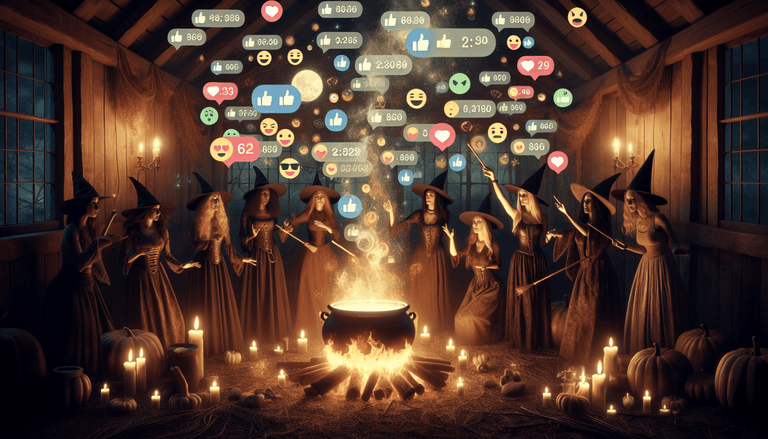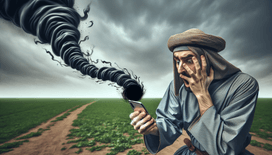Ah, the Salem Witch Trials. A dark chapter in history when witchcraft was on everyone’s lips, but not in a good way. Imagine the hysteria, the finger-pointing, the dread of those fateful days all captured in 1080p on the latest smartphone. But wait, what if everyone involved had a TikTok account?
The Witching Hour: TikTok Timelines
It’s 1692 in Salem, Massachusetts, a time when simply having a bad hair day could lead to accusations of witchery. Now, let’s throw TikTok into the mix and imagine Cotton Mather, the Puritan minister and chief witch-hunt cheerleader, with a penchant for going viral.
Mather would've been on TikTok faster than you can say, “Double, double, toil and trouble!” His account, suitably named @WitchHuntersUnited, would be filled with exposés and dramatic effect videos showcasing the ‘unmistakable’ signs of witchcraft behaviour. His followers? Every Puritan worth their biblical salt.
The accused women, unable to stay silent (because it’s TikTok!), would respond with their own content. Mary Easty's TikTok channel might consist of poignant, heartfelt pleas, hashtagged with #NotAWitch and #JustMisunderstood. Hers would be the wholesome content that makes you go "awww," while her sister, Rebecca Nurse, could take to more daring tactics, documenting her trial with sharp wit and maybe even the odd TikTok dance.
Witchcraft: As Told by Viral Trends
If you thought, "Dance like everyone’s watching because it may save your life," was a thing, the Salem TikTokers would embody this with fervour. Viral trends would sweep through the village, whether it be "Witchcraft 101: Wardrobe Malfunctions" or "Innocent Baking Hack or Dark Magic? You Decide." Each would be accompanied by dramatic music, think epic orchestral with unexpected drops.
Some enterprising townsfolk might even capitalize on the trend with merchandise. Consider Abigail Williams selling Silvia Silhouette filters, which darken the user's video, perfectly framing any witch-like antics, a hot item in Salem's burgeoning social media scene.
Judge Hathorne: TikTok’s Unlikable Influencer
Judge John Hathorne, who presided over the trials, would have his own unmissable TikTok. Imagine "Hathorne's Verdict Corner," where he delivers opinions on the latest TikTok trends with all the solemnity of a modern-day food critic going gluten-free.
Even with a platform like TikTok, Hathorne would maintain his somber, unmoved façade, though occasionally perplexed by the constant flood of duet videos reacting to his judgements, most of them with trendy tunes and witty commentary.
The Hashtaggery of 1692
The hashtag wars would rage with as much fire as the fevered accusations during the trials. The afflicted girls would plaster hashtags such as #CatchAWitch and #PurePuritan, while others might counter with #WitchHunt or #PuritanProblems.
In an ultimate plot twist, Tituba, the first accused, could gain unseen levels of fame on TikTok, portraying herself valiantly with the hashtag #NotYourScapegoat. Her story viewed through an entirely different lens could stimulate awakening, or at the very least, a viral dance challenge.
The Final Verdict
In this strange, bewitched fusion of history with modern day technology, would social media's overwhelming influence bend the course of such a chilling event? Would the Salem Witch Trials be more of a fizzle than a flame? It’s possible.
Eventually, humanity might see that having a few witch-like tendencies, like a spectre in your closet or an enchanted broom on your doorstep, isn't quite grounds for hysteria so much as it is for a viral TikTok, and maybe a few hearty laughs. Who knows? The users of @Salem1692 might even land their tale on 'For You' pages all across the world.
What better way to put a spell on you?







